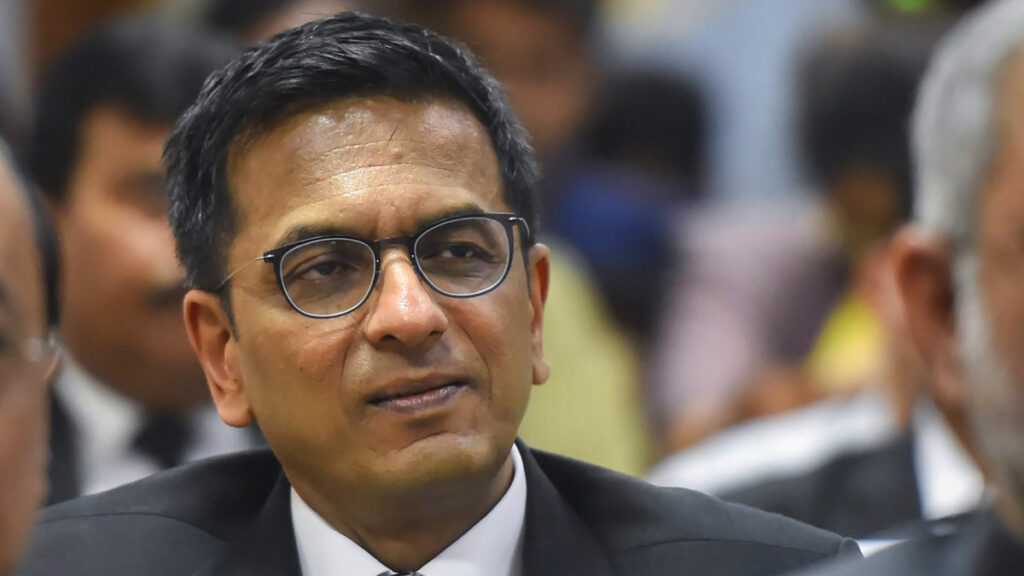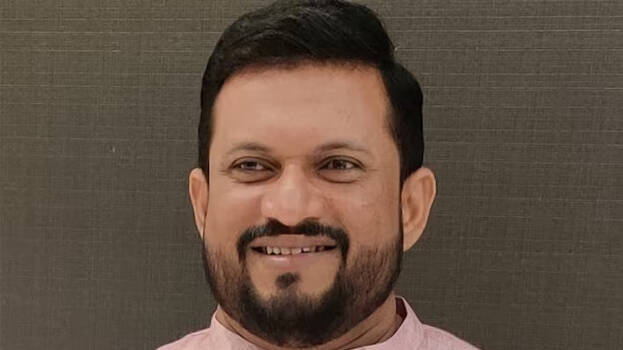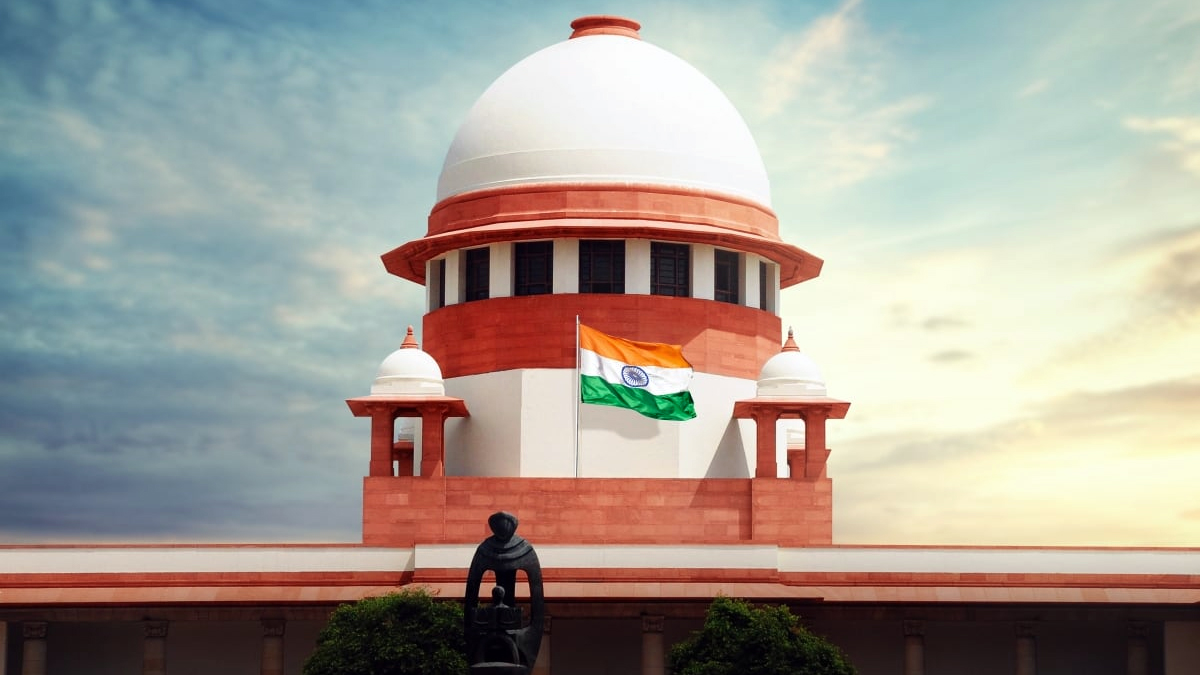
CJI Dhananjaya Y. Chandrachud’s first 100 days has been marked by reforms and initiatives
Last Updated on February 23, 2023 by Administrator
Written By – Srijan
In the first hundred days under the vibrant leadership of Hon’ble Chief Justice of India, Dr. Justice Dhananjaya Y Chandrachud, the Supreme Court of India has seen a number of new initiatives.
DISCUSSIONS AND PROGRAMS
The Supreme Court of India scheduled a program to discuss various aspects of the Constitution to advance democratic ideals on November 26, 2022, in order to uphold the tradition of marking Constitution Day jointly by all three organs of the State. The Honorable Prime Minister gave the Inaugural Address and opened the event. The Valedictory Speech was given by Her Excellency the President of India. In November 2022, the Chief Justices’ Conference’s working sessions—which were presided over by the Hon’ble Chief Justice of India—discussed a number of issues pertaining to “Envisioning a futuristic judiciary.”
This month, the Supreme Court of India hosted the first Annual Lecture on the subject of “The Role of Judiciary in a Changing World” by Hon’ble Mr. Justice Sundaresh Menon, Chief Justice, Supreme Court of Singapore, to mark the 73rd anniversary of the founding of the Supreme Court of India.
Hon’ble Justice Sanjay T Tailor, Justice of the Illinois Appellate Court, First District, led a group of 23 US State Court Judges, including Indian-American Judges, to meet with Hon’ble the Chief Justice of India to discuss matters pertaining to judicial functioning. The Supreme Court of India held its first-ever hackathon to find creative solutions and investigate workable ideas for improving and streamlining the current processes from “filing” to “listing” court proceedings. The event was a step in the process to improve organizational procedures and introduce changes to the Registry’s operations.
IT IMPLICATIONS
E-SCR
As a tribute to the country, on January 2, 2023, the Hon’ble Chief Justice of India introduced eSCR, the electronic version of Supreme Court Reports (SCR), the official journal of the Supreme Court of India. The site offers the ability to search judgements based on numerous criteria, including phrase, words, all words, the name of the Hon. Judge, bench strength, volume, citation, date of decision, etc. There are more than 34,000 judgments available online. The portal offers free access to Supreme Court Reports that have been released since 1950. 34,055 judgements total have been uploaded in English thus far. After 4 weeks of its debut, on January 26, 2023, the Supreme Court of India announced several additional features on the e-SCR webpage as an upgrade. The new service offers translated copies of Supreme Court judgments in Indian languages with the goal of facilitating access to judgments in scheduled languages. There are now 3132 decisions available in Indian languages (Hindi- 2952, Tamil – 52, Malayalam- 29, Telugu – 28, Odia -21, Kannada- 17, Marathi-14, Assamese & Punjabi- 4 each, Nepali, Gujarati & Urdu- 3 each, Garo and Khasi – 1 each).
Word proximity search, another function added to e-SCR, allows for the searching of words within specified vicinity. This function helps the user focus their search to produce more relevant results.
SLIPPING ONLINE APPEARANCE
The creation of the Advocate Appearance Slip Portal, which intends to do away with manual filing of appearance by the Advocates-on-Record, is one of the initiatives that have been pushed for guaranteeing smooth access to justice through the use of technology and to make the working of the Registry paperless. Since its introduction, 1,42,818 online appearance slips have been made, and at least as many paper appearance slips have also been archived.
DIGITALIZATION OF DOCUMENTS
In order to ensure that the judiciary makes the best use of technology, the process of scanning and supplying soft paper books for paperless court functioning was motivated by the Hon’ble Chief Justice of India’s forward-looking view. The PIL department has also made significant technological advancements and is aiming toward petitions being processed electronically.
e-HRMS with e-OFFICE
Initiating the process of implementing e-HRMS in the Registry and implementing the e-Office module in a few administrative sections of the Supreme Court of India are two other quick-moving initiatives that are aimed at achieving not only an environmentally friendly, paperless operation of the Registry but would also go a long way in maintaining employee records and effective administration.
MODULE FOR ANNUAL PROPERTY RETURNS
The annual property returns for every officer and representative of the Registry can be submitted online. Another epaulette on the shoulders of the Registry to reduce paper use and make work processes more efficient and ecologically friendly is the joint initiative of the Computer Cell and the Vigilance Cell to establish the annual property module.
VIDEO-CONFERENCE
The Computer Cell was crucial in ensuring that the video conferencing (VC) infrastructure and services are available twenty-four hours a day, seven days a week in high availability mode following the Competent Authority’s decision to continue VC in physical-hybrid mode. 2,53,919 people attended VC proceedings at the Supreme Court of India between November 9, 2022, and February 15, 2023. 43 Constitution Bench proceedings have also been live-streamed throughout the same time period via YouTube and NIC’s webcast services.
SUPREME COURT ACCESSIBILITY COMMITTEE
A committee called the “Supreme Court Committee on Accessibility,” headed by Honorable Mr. Justice S. Ravindra Bhat, has been established with the broad objectives of conducting an accessibility audit of the Supreme Court’s facilities and operations, releasing a questionnaire for people with disabilities who visit the Supreme Court’s facilities (including employees, attorneys, litigants, interns, etc.), and preventing future problems from occurring. Surveys have been developed and agreed in meetings and will be posted on the Supreme Court website within a week to solicit input from stakeholders and experts in disability rights.
WORKOUTS & WELLNESS
For the officers and employees of the Registry, training courses in stress management, communication and presentation skills, organizational behavior & ethics and value in public governance, critical thinking, problem solving & decision making are now being held. The Supreme Court Staff is beginning to use the newly opened Health and Wellness Center, which includes rooms for yoga and cardio exercises in addition to standard gym equipment. For the employees’ health and wellbeing, the CGHS Wellness Centre’s amenities are being upgraded.
The Automatic External Defibrillator (AED) will soon be put in the CGHS Wellness Center at the Supreme Court under the Hon’ble Chief Justice of India’s direction.
REFORMS IN ADMINISTRATION
Advisory Committee on Case Categorization
The “Case Categorization Advisory Committee,” headed by the honorable Mr. Justice P.S. Narasimha, has been established to review the framework for categorizing judicial matters according to “Subject Categories” with a view to identifying overlapping subject categories/sub-categories, renaming/merging the existing subject categories and/or sub-categories, subject categories/sub-categories which have become redundant, to promote the “Subject Categories” as a The Committee’s report is anticipated soon.
COMMITTEE ON AI-ASSISTED LEGAL TRANSLATION
The Supreme Court of India has established a committee called the “AI assisted Legal Translation Advisory Committee” under the leadership of Hon’ble Mr. Justice Abhay S. Oka to evaluate, track, and recommend ways to improve the use of artificial intelligence tools for translating court documents into various vernacular languages. The Committee’s members are specialists in their respective fields of artificial intelligence. Every High Court has also established an AI Translation Committee to oversee the SUVAS-assisted machine translation of court documents. The High Courts and the Honorable Chairperson of the Committee have met four times to develop a plan for the translation of Supreme Court reportable judgments into local languages. Four High Courts—Allahabad, Rajasthan, Patna, and Madhya Pradesh—have been chosen to translate Supreme Court decisions into Hindi as part of a pilot project. Starting on February 20, 2023, however, Orissa, Madras, Karnataka, and Gujarat High Courts will translate Supreme Court decisions into Odia, Tamil, Kannada, and Gujarati, respectively. The High Courts are also urged to translate their rulings into the state’s indigenous tongue.
YEARLY CALENDAR FOR THE REGISTRY
All Branches/Sections of the Registry have been directed to prepare an Annual Calendar for their respective Branch/Section covering activities that are being carried out annually with the approval of the Competent Authority and to ensure strict compliance in order to improve efficiency and smooth operation of all Branches/Sections of the Registry and to avoid last-minute hassle in seeking approval of the Competent Authority.
EMAIL CONTACT POLICY
A standard email policy and set of guidelines for the officers and staff of the Registry went into effect on January 25th, 2023. Email policy’s key goals are to eliminate paper use in the Registry’s administrative offices, serve as a storehouse and archive for information, and reduce staff and overhead expenses through electronic transmission.
Online portal for RTI
The RTI online site, which was introduced on November 24, 2022, represents a significant step towards transparency, the paperless submission of applications and appeals, and the payment of fees using online methods including net banking, credit card purchases, UPI, etc. There have so far been 450 online RTI petitions submitted.
SOFTWARE FOR BILL SUBMISSION
streamlined Cash & Accounts software module for bill payments I, which is more effective and user-friendly, was created by the NIC/Computer Cell of this Registry under the Head “Salary” (Intranet Basis) (user friendly).
Version 2.0 of EFILING
A new electronic filing system was created by the Computer Cell’s own software development team in close collaboration with NIC (efiling Ver.2.0). The Registry’s main case management tool, Integrated Case Management & Information System, and the efiling Ver. 2.0 software are closely integrated (ICMIS). The filing Ver. 2.0 will not only make it possible for Party-in-Person, Advocate-on-Record, and other justice delivery system stakeholders to submit new cases, applications, papers, etc., online, but will also allow them to eSign their documents. Additionally, the eFiling Ver. 2.0 will notify the Advocates-on-Record and Party-in-Person of the defects and allow them to access their case-related documents, paperbooks, etc. as well as fix all of the defects. The e-filing Ver. 2.0 program is currently undergoing advanced testing, and it will soon be available for use.
ICMIS USE FOR THE PAPERLESS FUNCTIONING OF THE REGISTRAR COURT
The Registrar Court No. 2 is paperless in operation. Soon, other Registrar Courts will operate without paper.
PERFORMANCE OF THE COURT MASTER’S WING WITHOUT PAPER
The practice of delivering new matter files to the Court Masters’ Wing (about 400 to 500 files per working day) will terminate since the ICMIS now has access to the records in electronic form.
VIDHI SAHITYA PRAKASHAN
The Translation Cell of the Supreme Court of India is partnered with Vidhi Sahitya Prakashan, the legislative division of the Ministry of Law & Justice of India, with the goal of providing an original and accurate translation of significant reportable Supreme Court judgments into Hindi.
NEUTRALISATION OF CITATIONS
To maintain a consistent pattern of quoting all Supreme Court decisions, steps have been taken to introduce and execute the “Neutral Citations System,” a unified, dependable, and secure system for recognizing and citing decisions in the Supreme Court of India. The committee established to recommend a method for sequentially seeding the “neutral citation” into legacy judgment and order data and uploading live judgment and order data will present its recommendations within a week.
THE ADMINISTRATIVE MATERIAL BRANCH’S ACTION PLAN
A new procurement policy that includes changes to financial authority at all levels and broadens the source of procurement by including the Government e-Marketplace (GeM), among other things, is being created and is being taken into consideration. Ushers, chauffeurs, and other Group “C” non-clerical employees will no longer wear colonial garb as part of a planned change in dress code and uniforms.
ACTIONS TAKEN BY THE RECEIPT & ISSUE (R&I) BRANCH
The R&I branch has taken action to use the Department of Posts’ BNPL (Book Now Pay Later) facility, which would provide an API (Application Program Interface) facility. The relevant Branch might be able to produce the delivery status report through this effort and follow the delivery of the items sent by the Registry online. By taking this step, the issues with handling A.D. Cards (if supplied through registered A.D.) would be resolved, saving the Hon’ble Courts a lot of valuable time and hastening the process of delivering justice.
ACTIVITIES CONDUCTED BY THE PIL-ENGLISH BRANCH
The PIL-English division has begun processing all electronic petitions received through email online. The Registry will make significant labor and paper savings thanks to this initiative. Based on data from the previous year, 83,000 letter petitions were received electronically. Assuming that each petition contains at least two pages on average, the Registry will save 1,66,000 pages, or 332 reams of A-4 size paper, by doing this.
DEVELOPMENTS MADE ON THE JUDICIAL SIDE
On Monday, Tuesday, and Friday, new and after-notice items are listed, while on Wednesday and Thursday, only ordinary cases are listed. There are now between 40 and 80 cases listed before the Registrar Court each day. There were 13,764 total cases filed and 14,209 total cases resolved over the time frame from 9 November 2022 to 15 February 2023.
JUDICIAL NOMINATIONS
The Supreme Court has appointed 8 honorable judges. The SC Collegium has suggested 12 individuals for the position of High Court Chief Justices. 04 Chief Justices, including 1 woman and 1 member of the OBC, have been appointed in defiance of these recommendations. In a first, recommendations have been made to fill two high court chief justice positions that are expected to become vacant. The SC Collegium has suggested 35 names (including 7 names of women candidates) for the appointment of High Court judges. Since then, 30 judges have been appointed to the High Courts, including 7 women judges, 8 OBC judges, 2 SC judges, 1 ST judges, 1 Christian judge, and 1 Muslim judge.
The Collegium is carefully taking into account the following factors when making recommendations for judicial appointments:
– including gender diversity;
– the obligation to give minorities and underrepresented groups in society their appropriate representation.
Hon’ble the Chief Justice of India urged the Chief Justices of the High Courts to give priority to filling vacant posts at all levels by making merit-based recommendations of suitable candidates with impeccable integrity and personal and professional conduct at the conference held on the occasion of Constitution Day in November 2022.
ACTIONS TAKEN BY THE e-COMMITTEE
-Launch of the Digital Courts Desktop Application.
-For judges and Chief Justices of the High Court, the Justis App 2.0 was released.
-Neutral Citation has been introduced in a few States, and attempts are being conducted to spread it throughout India.
-In eCommittee, eOffice was implemented.
-Implementation of eFiling 3.0 in District Courts of Chhattisgarh, Jharkhand, Uttar Pradesh, Tripura, Uttarakhand, and Bihar as well as High Courts of Manipur, Jharkhand, Uttarakhand, and Chhattisgarh.
-Module of Sensitization on the LGBTIQA+ Community for the Judiciary
-Website migration to S3Waas- District Court is in progress.
-Supreme Courts judgments are included in the judgment search portal.
-Supreme Court judgments are made accessible through the Judgment Search Portal ECT. The e-Committee website was launched in Bengali in the months of November and December of 2022, and training is conducted there.
-The Finance Minister announces a 7000 Crore budget allocation for phase 3 of the eCourts project based on the recommendation of the eCommittee.




